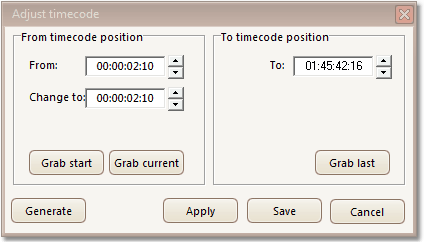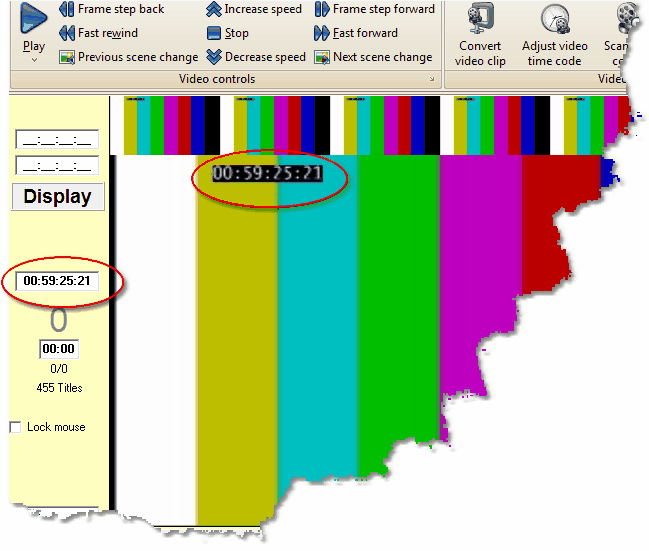Make sure you are in video cache mode and the slider bar is visible.
Find the start of the video clip. Check the visual superimposed time code that is copied into the picture. It might for example be 01:00:00:00
In the ribbon menu choose Video/Video tools/Adjust video timecode or press the keyboard shortcut assigned to that function (default is Ctrl+DownArrow). The adjust timecode menu will pop up.

Choose the field "change to" and correct the time code till it is identical with the superimposed time code. Then click save.
The running time code (in the main window field under EDIT/DISPLAY and above the subtitle number) will now also be identical with the time code copied into the video clip.

Running time code and superimposed time code must be identical
Now drag the slider forward (to the right) with your mouse:

Compare the superimposed and running time codes. As long as they are identical, bob's your uncle.* If there is a shift you will have to find out where it happens, fetch the Adjust Timecode menu, change the "change to" value to make the two time codes identical again, and click "Save". If you can live with a 1 frame deviation, you do not have to find the exact location of the shift, but need only change it whenever you notice a one frame shift has happened.
Tip: If you speed through the video clip using the Jump X frames function with X set to 25, holding down the jump forward key, the frame value of the superimposed time code will remain unchanged, until a frame is dropped or repeated.
If you want to reset your calibration, just click "generate".
* If you are using MPEG clips you may have to press NumPad7 or NumPad9 to be absolutely sure that the correct time is shown in the running time code window. This is another good reason to convert everything to MJPEG.
See also: